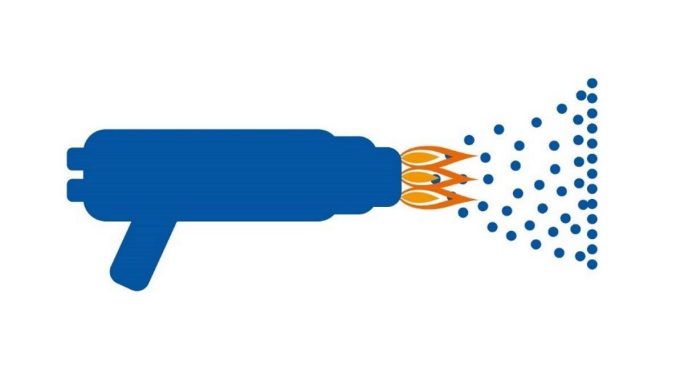How Do You Apply Thermoplastic Coatings?
Our products can be applied using various methods
Unlike thermoset coatings, the thermoplastic coating does not require any chemical curing. The melt process of the polymer is the basis of the coating process and is consequently very rapid. Depending on your business needs and on the size of the part to be coated there are different processes which may be employed.
Spraying
By Electrostatic Spray (ES)
Our electrostatic range of cryogenically-ground powders are fine enough to be electrically charged and sprayed on to earthed metal items. The metal items are then placed in an industrial oven and heated until the powder melts. The item is then cooled to leave a high-quality coating.
By Flock Spraying / Spray Lining (FS)
The substrate to coat will be preheated at the adequate temperature, depending on nature, wall thickness and consequently heat capacity. Uncharged powder is blown onto the hot metal item where it melts to form a coating. The item is then left to cool to leave a good quality coating.
Fluidised Bed Coating (FB)
Our fluidised bed powders behave like a liquid when pressurised air is allowed to bubble up through it. A metal item, heated to the correct temperature, is then completely immersed into this fluidised bed. The powder melts on contact with the metal and the item is then lifted out of the fluidised bed. The item is then cooled to leave a high-quality coating.
Flame spraying (FLS)
Uncharged powder is blown inside a flame onto a pre-heated metal item. The powder melts on transit from the application gun to the metal surface and forms a solid coating as the metal item cools down. This is suitable for on-site coating or repairs.
Extrusion (XT)
The thermoplastic coating is led to the extruder, a heater melts the powder to the correct temperature which allow the metal wire to pass through a body of molten coating material. The wire is then allowed to cool to leave a continuous protective coating.
Spin Coating / Roto-lining (RL)
The object that requires coating, typically a bottle or cylinder, is heated up to the desired temperature. Fluidised bed powder is then injected into the object. The object is then immediately spun and tumbled to give a complete and consistent coating inside the bottle. Any unused powder is then tipped out of the object.






